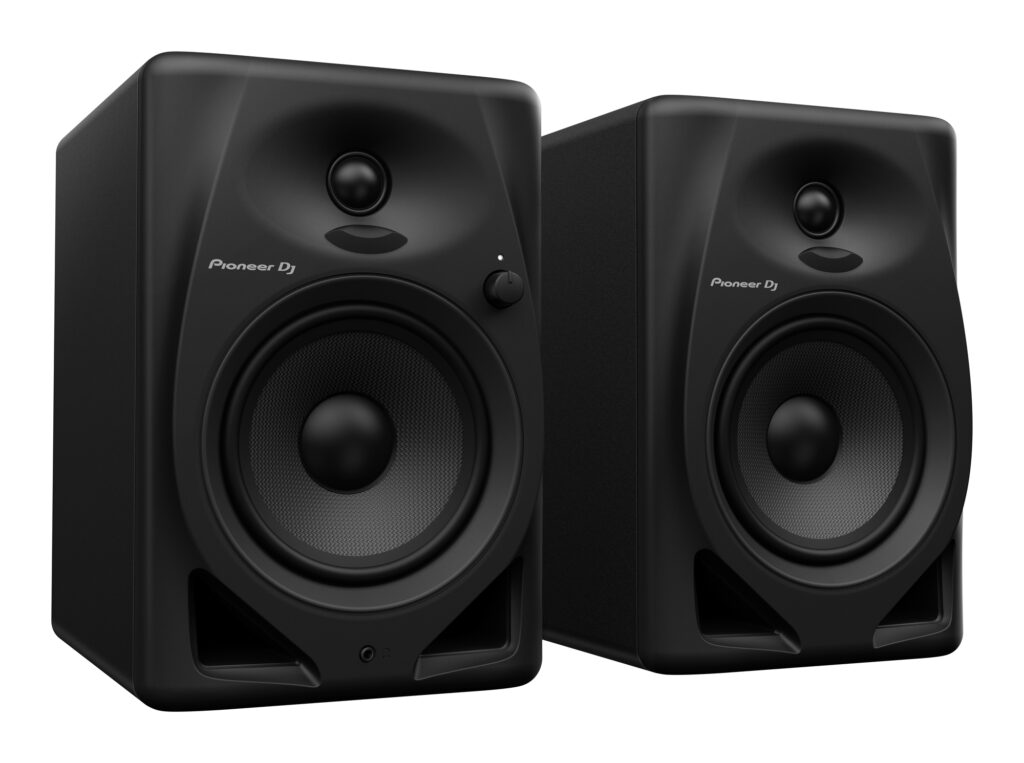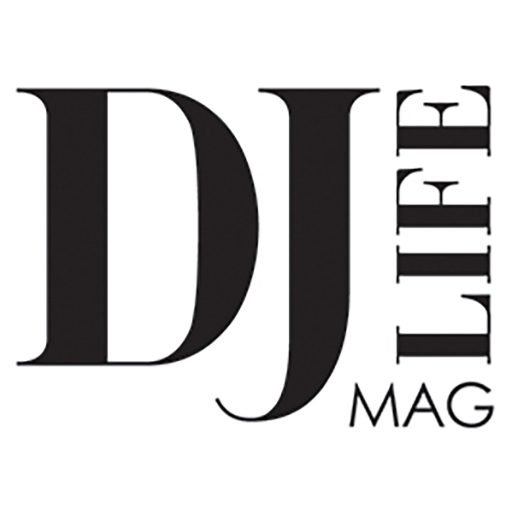I recently had the opportunity to review Pioneer DJ’s new XDJ-XZ controller (read about that here). When the trusty guy in the brown uniform dropped off the loaner unit of the controller, there was an extra box in tow with “DM-50D” printed in large black letters on the outside of the container. And indeed, inside was a pair of the company’s new 5-inch audio monitors of the same name. Well, how ’bout that?
Unwrapping them and setting them up at my review workstation, I was impressed with the visual design of the units. With cabinets of roughly 7-inches wide, a bit over 10-inches tall, and around 10-inches deep, they’re a good size for the typical DJ’s workspace.
The promise of the DM-50Ds is that they’re dual purpose; that they’re equally at home for production use and for DJ use. The company says that a switch on the back of the left monitor (more on that in a moment) changes the EQ profile of the DSP (digital signal processor) that’s built into the integrated amplifier. I was anxious to give the feature a try.
Getting Started
First things first – the approach with the DM-50Ds. Unlike most professional audio monitors, which are supplied individually as identical units for left and right, Pioneer DJ chose to configure the system with what I’d call a “desktop-computer-speakers” approach. The left monitor of the pair contains the audio and power connections, and obviously, then, the amplifier circuits as well. The left unit is ever so slightly deeper in measurement on the spec sheet, and a bit heavier as well. Common speaker wire (supplied in the box) connects the left main unit to the right remote unit.
I get why the company chose this route; it’s certainly less costly to produce than putting a full amplifier and power supply into both the left and right units, in turn no doubt making it possible to offer the DM-50D set at a price point that’s a bit more appealing. In fact, with a suggested price of $199, it is indeed fairly economical. That said, it’s not my personal preference as monitors go, although I can certainly see that for use in a DJ environment, it would have its advantages in terms of connection convenience.
The company did provide a generous array of connection options. You can pick between ¼-inch TRS connections, the usual RCA, and even a stereo mini-connector. Apart from those, the speaker-wire connections for the right remote unit and a power connection (and switch), the only other thing on the left side is that aforementioned EQ profile switch, which Pioneer DJ labels “Sound Mode.” Simply pick “DJ” or “production” to suit your use case – and off you go.
As I set up the units, about the only issue I came up with is that the bottom surface of the units is the same textured covering as the rest of the monitor cabinet. You will need some sort of isolation for the speakers (speaker stands or something similar), otherwise, you may end up with vibrations and noise against the work surface — or perhaps even some “creep” of the speakers as the thumpity-thump of the bass might well make them walk a bit. A minor point, but a small patch of isolation foam would have been a nice (and not very costly) addition on the factory floor.

In Use
Another desktop-computer-speaker-like feature of the DM-50D is the volume control on the front panel of the left unit. I didn’t actually see it at first, leading me to wonder why my audio wasn’t working. (The control was turned all the way down, as it arguably should be when brand new.) The volume control is a nice touch, but perhaps a little gratuitous in most cases.
Once I got the audio playing through the system, however, I was immediately impressed. Given the small 5-inch main driver, I truly wasn’t expecting the speakers to deliver so much punch at the low end. But, they do have a rather nice, full sound when the sound-mode switch was in the DJ position.
Switched over to the production position, I couldn’t honestly discern a huge difference. First, the selection seems to take a couple of seconds to take effect, and it’s a somewhat slow crossover, making a direct A/B comparison a little difficult. As near as I’m able to tell, and as one might expect, the DJ position delivers more low end, while the production position is ostensibly more flat.
I saw “ostensibly” because Pioneer DJ doesn’t appear to publish audio specifications for the DM-50D. There are no response curve graphs, and nothing related to the range reproduced by the speakers, or precisely how it all changes as the sound mode switch is moved. As a result, it’s a little difficult to tell without the appropriate diagnostic equipment just exactly what these speakers are doing in the two sound modes, or indeed how well they’re performing.
A big part of audio monitoring is shaped by the room design. So, these monitors (or any other, typical home-studio applications) will usually benefit from the use of room sound correction solutions (like Sonarworks) if one intends to do any serious production mastering with the DM-50Ds.
For general DJ use, however? As I disconnected the monitors from my system to be packed up and returned to the company, I was left with the lingering sense that they’d make a terrific and cost-effective monitoring solution for nearly any DJ booth. And at around $200? The price of admission is pretty appealing indeed.
To check out more gear reviews, click here.


